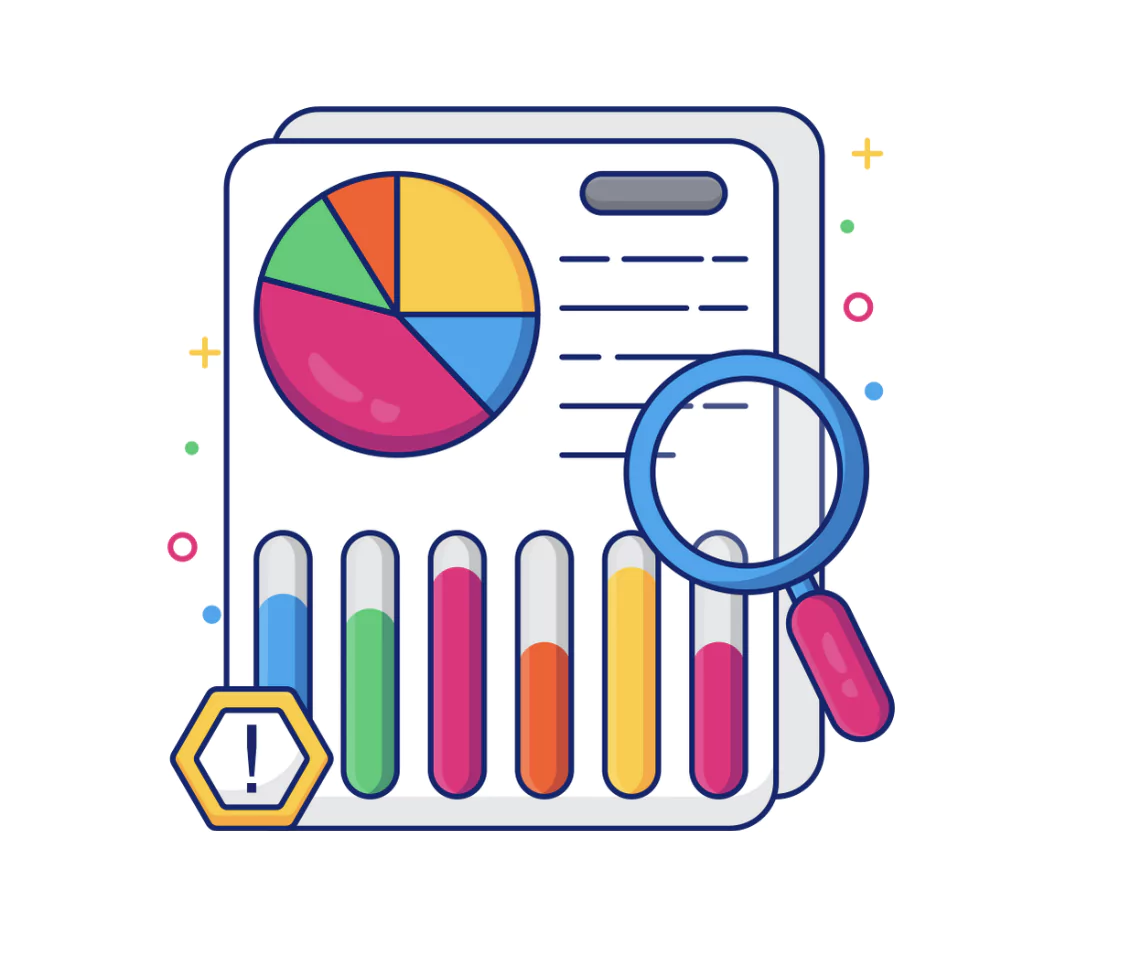Amazon Business Intelligence Interview Questions: Start your preparation with Amazon Business Intelligence Interview Questions especially for candidates who are appearing for this interview this year. With the increased reliance and importance of data in every field there is a significant increase in demand for experts who can manage the data information easily.
Amazon Business intelligence experts are responsible for translating large data warehouses into strategic data driven decisions. This collection of Amazon Business Intelligence Interview Questions will help you prepare for your next interview in Amazon.
What Are The Questions Asked In Amazon Business Intelligence Interview Questions?
The interview questions at Amazon comprise important topics related to business intelligence. Check some of them below and make sure you prepare accordingly.
- Algorithms
- A/B Testing
- Statistics
- SQL
- Python Programming
- Product Metrics
- Probability
- Analytics
- Machine Learning

As an intelligent expert you will be responsible for the following:
- Must be familiar with data visualization
- Familiar with statistics and coding skills
- Understanding of database management systems
- Familiar with cloud platforms
- Understanding of data security and compliance
20 Amazon Business Intelligence Interview Questions 2025

Check some of the handpicked questions for anyone who is preparing for Amazon Business Intelligence Interview.
1. Can you tell me about a time you had to take the lead in a challenging situation?
Ans: Amazon values leadership qualities, even in non-leadership roles. “In my previous role, our team faced a critical deadline when our project lead unexpectedly took leave. I stepped up to coordinate the project’s final stages, reassessed priorities, redistributed tasks based on workloads, and initiated daily check-ins.
We successfully met the deadline, and the final solution received positive feedback. You can frame the answer for these questions based on your experience.
2. Why do you want to work with us?
This type of Amazon business intelligence interview questions assesses your motivation and alignment with Amazon’s mission. Consider a situation where I’m drawn to Amazon’s culture of innovation and customer obsession. The opportunity to work on projects that impact millions globally aligns with my desire for impactful work and continuous learning.
3. Tell me about one of your past projects.
Ans: I led a project to enhance user engagement for our mobile app by analyzing user behavior data to identify drop-off points. We developed predictive models and implemented A/B tests, resulting in a 15% increase in user retention.”
4. How do you prioritize multiple deadlines?
This question demonstrates your time management and decision-making skills. You can answer this based on the most effective approach to handle deadlines.
“I assess tasks based on impact and urgency, aligning with the ‘Ownership’ principle. I communicate with stakeholders to align priorities and adjust plans as needed to meet deadlines efficiently.”
5. How do you resolve conflict with co-workers or external stakeholders?
This question assesses your interpersonal and conflict-resolution skills for an interview. Provide a real time situation where you dealt with such a situation and managed it efficiently.
“In a past project, I had a colleague who made unilateral decisions. I initiated a private conversation to understand their perspective and shared the team’s concerns. We agreed on a more collaborative approach, improving team dynamics.”
6. Write a query to get the last transaction for each day from a transaction table.
Ans: This question will assess your ability to use the window functions to solve these queries. You can approach this answer with a simple example based on SQL queries.
| SELECT id, transaction_value, created_at
FROM ( SELECT *, ROW_NUMBER() OVER (PARTITION BY DATE(created_at) ORDER BY created_at DESC) as rn FROM transactions ) t WHERE rn = 1; |
7. What is the difference between OLTP and OLAP?
Ans: OLTP system is responsible for handling transactional data in real time which is optimised for operations like insert and update. While the OLAP system are designed for solving analytical queries which support complex problems like data mining, reporting, data manipulation, and more.
8. Write a simple query to find users who made additional purchases after making the first purchase.
Ans: Let us take a sample data where the for first_purchase is listed of a user id from the purchases table. You will have to find the person who makes more than one purchase.
| WITH first_purchase AS (
SELECT user_id, MIN(purchase_date) as first_date FROM purchases GROUP BY user_id ) SELECT COUNT(DISTINCT p.user_id) FROM purchases p JOIN first_purchase fp ON p.user_id = fp.user_id WHERE p.purchase_date > fp.first_date; |
9. Write a query to find the current salary for each employee from a payroll table with multiple entries due to an ETL error.
Ans: You can approach this problem with a sample data consisting of a payroll table. You will have to select the empolyee_id and salary to find the current salary.
| SELECT employee_id, salary
FROM ( SELECT *, ROW_NUMBER() OVER (PARTITION BY employee_id ORDER BY entry_date DESC) as rn FROM payroll ) p WHERE rn = 1 |
10. How would you handle missing data in a dataset using Python?
Ans: For handling missing data you can use Python Panda library which can help you in identifying missing values and also replacing it with a proper value. You can reply with the following in these type of Amazon business intelligence interview questions.
I would use pandas to identify missing values and decide on imputation strategies based on the data context. For numerical data, I might fill missing values with the mean or median.
11. How would you ingest near real-time JSON data and optimize read/write operations?
Ans: You can answer this question with the Apache Kafka you can perform real time data ingestion and store the data in Amazon DynamoDB for low latency access. If you implement proper partitioning and indexing it would optimise read and write operations.
12. How would you analyze a noisy and volatile dataset?
Ans: You can perform exploratory data analysis to identify the patterns and outliers in the dataset. This technique like moving averages, consulting domain experts can help you in understanding and mitigating the noise factors effectively in the dataset.
13. How would you simulate overlapping job schedules to estimate annual costs due to failures?
These types of Amazon business intelligence interview questions evaluates your ability to model and simulate scenarios. You can answer this question with the Python function: you can simulate random start times for two jobs each night and check for any overlaps.
By running the simulation for over 365 days you can count the number of overlaps. To calculate cost you can multiply by the number of failures by the cost failure.
14. How would you measure the success of a new feature on Amazon’s product page?
Ans: You can answer this question by mentioning metrics like conversion rates, click through rates, overall sales, and more. You can use different testing such as A/B Test to compare the new feature group to a control group. We will also consider using secondary KPIs such as session duration, bounce rate, and more to detect any unexpected behavior from the user’s side.
15. How do you differentiate between correlation and causation in business data?
Ans: Correlation shows a relationship between two variables, but it is not necessarily that one causes the other. To determine causation, you would rely on controlled experiments like A/B testing or causal inference methods like regression discontinuity or instrumental variables when experiments aren’t feasible.
16. Tell me about a time you used data to influence a major decision.
Ans: You can mention your past experience to answer these types of Amazon business intelligence interview questions. Consider a situation when the sale was declining in your company.
At my previous job, our sales were declining in one region. I analyzed customer churn data and discovered delivery delays were causing dissatisfaction. I presented the findings to leadership, who invested in local warehousing. We saw a 25% reduction in churn the following quarter.
17. Describe a time when you made a mistake in your analysis and how you handled it?
Ans: In this type of Amazon business intelligence interview questions you will need to present a practical experience in your previous companies. Tell if you faced any such issue or let them know if you did not and give them a valid reason along with it.
18. How would you identify duplicate records in a large CSV file using Python?
Ans: We can use the Python Pandas file and use duplicated() method to find the duplicate rows in data. For large data you can chunksize the data to read the file in the parts and store hash keys in a set for duplicate detection. It ensures the efficient use of memory. This type of amazon business intelligence interview questions are important using Python.
| import pandas as pd
df = pd.read_csv(‘file.csv’) duplicates = df[df.duplicated()] |
19. How would you handle missing data in a dataset using Python?
Ans: You can handle missing data and formats using the pd.to_datetimne() with errors = ‘coerce’ to convert the inconsistent formats and drop the input.
Case Studies Types Amazon Business Intelligence Interview Questions

1. Amazon has received an increase in customer complaints about late deliveries in a specific region. You’re tasked with identifying the root cause and recommending data-driven actions to improve delivery performance. How would you approach this?
Hint: You can approach the answer with suitable objectives, data collection, exploratory data analysis, testing, insights and metrics. Interviewer might ask you to walkthrough the complete process of analysis.
2. You’ve noticed a drop in renewals for Amazon Prime subscriptions in Q3 compared to Q2. Senior management wants insights into the reason and data-backed suggestions. What would you do?
Hint: You can define the KPIs, gather data, segment the users on various factors, analyze patterns, recommend actions and track results.
3. You’re told that conversion rates (app sessions leading to a purchase) have dropped for mobile users. You’re asked to find out why and propose solutions. How would you go about this?
Hint: You can start with defining metrics, segmentation of data, investigate the causes, validate hypothesis, recommended actions and measure impact.
4. Amazon wants to reduce shipping times and costs by improving inventory distribution across fulfillment centers. How would you use data to guide this strategy?
Hint:You can approach the answer with suitable objectives, data collection, exploratory data analysis, testing, insights and metrics. Interviewer might ask you to walk through the complete process of analysis.
Learn Data Analysis with PW Skills
Become an expert in data analysis with PW Skills Data Analytics Course. This course is suitable for everyone including beginners as well as working professionals. You will get industry led live sessions and recorded videos within the course.
This course consist of in-depth tutorials, practice exercises, real world projects and more. Complete all the assessment on time to receive the course certification from pwskills.com and start your career with a strong portfolio.
Amazon Business Intelligence Interview Questions FAQs
Q1. Can freshers give Amazon business intelligence interview exams?
Ans: Yes freshers or recent graduates can apply for the Amazon business intelligence interview questions this year. Amazon does hire freshers and interns for this role.
Q2. Do I need to have experience for the Amazon BI role?
Ans: You only need to have 0-1 years of experience if you are a fresher applying for the Amazon business intelligence position. If you are working professionally then you will need to have an experience of 3 or more years.
Q3. How many rounds of interview is set in Amazon for freshers?
Ans: The interview rounds in Amazon comprises 3-4 rounds of interview. This interview will consist of a phone screen and on site virtual interview rounds.
Q4. What is the salary for a business intelligence interview?
Ans: The average salary of a Business Intelligence interview is between 17 to 29 lakhs per year. It include base salary and additional pay.

